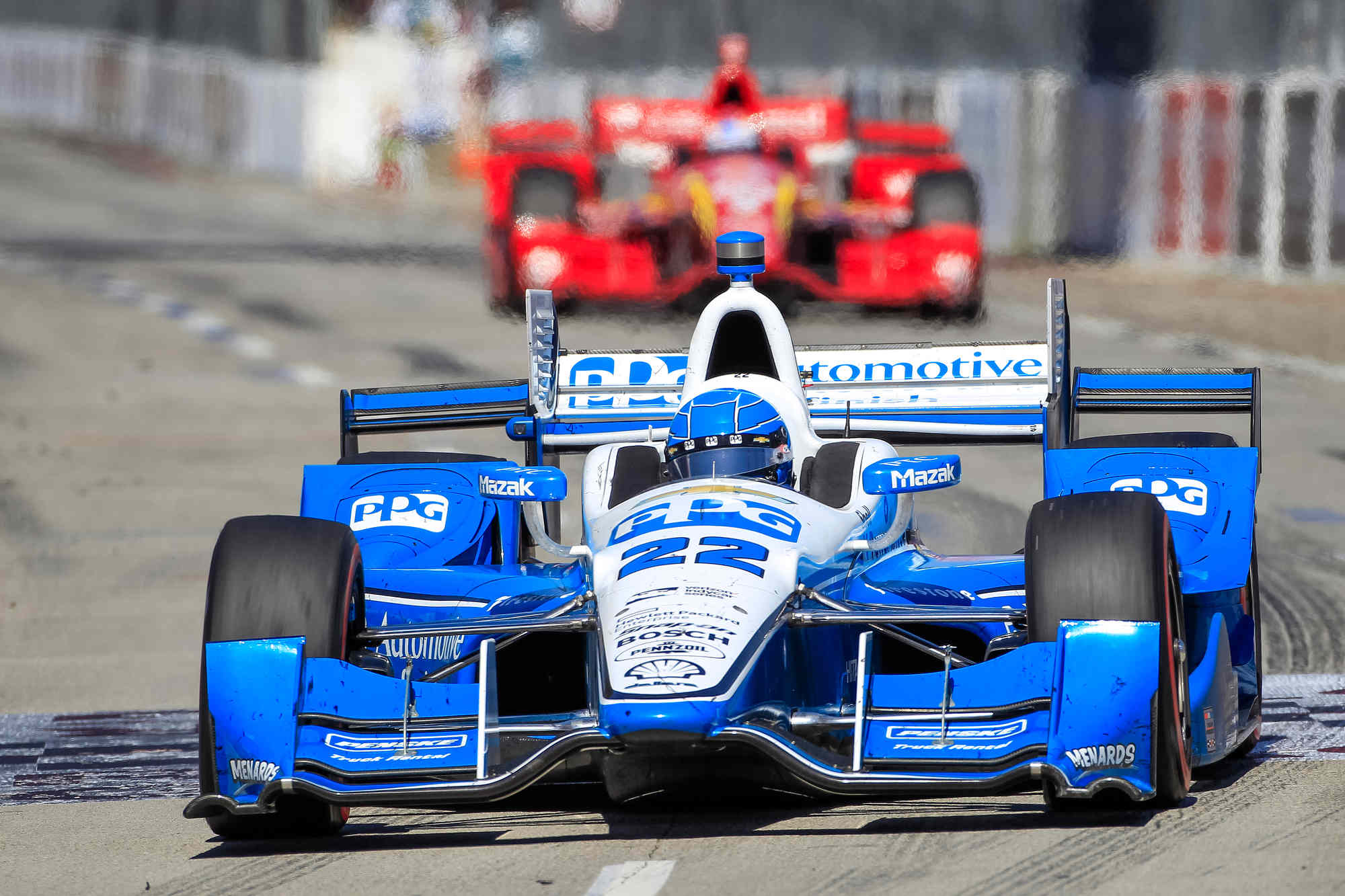Long Beach carries IndyCar banner in Southern California
 |
| Pagenaud leads Dixon |
Another race on the streets of Long Beach, the best of its kind in the country, is in the books. It wasn’t as exciting as some in previous years, though Simon Pagenaud and Scott Dixon did their very best to keep television viewers and those on hand entertained.
Of course, anytime a winner can edge second place by a record 0.3032 seconds, it’ll go down as a good race. You can bet Pagenaud thinks that today.
It was a race without a yellow flag, the first one at Long Beach since 1989, but with plenty of controversy. Did Pagenaud violate a rule re-entering the track? Why were other teams upset with a “warning" issued by the sanctioning body when they though such warnings were part of the past?
“It was an inch on the race track there, so I’m good," Pagenaud said. “The left sides on the right side of the dots, which it is; so I’m good."
So, why would more than one exiting fan call it "boring"?
The winning speed (100.592 mph) certainly won’t match the one next month at the Indianapolis 500, but it was a race that each of the 21 starters actually finished. Pagenaud, Dixon and pole-sitter Helio Castroneves, the top three finishers, were three of the four leaders (Charlie Kimball the other) in a race that lasted just under 94 minutes.
Unlike recent years, it was also the final IndyCar Series event of the year in Southern California. Since 1997, there have been 14 seasons of two open-wheel races in the area: the Toyota Grand Prix of Long Beach and, a majority of the time, a 500-mile race at Auto Club Speedway.
It’s great to see the top IndyCar teams slug it out on the Long Beach streets. Such a race places a premium on not just the drivers, but also the team in preparing a car that will not only turn left, but right as well. And that’s not even mentioning a hair-pin turn that has created so much excitement throughout the course of 42 years.
It was also great to see the same cars go flat-out around a two-mile oval, especially built for open-wheel races. Speed was what Roger Penske had in mind as far back as 1994 when he started construction on the track that has produced the fastest average lap in the world (241.428 mph by Gil de Ferran in 2000) and the fastest race in history (207.151 mph by Sam Hornish Jr. in 2003).
But unless there is an unexpected compromise between the IndyCar Series and International Speedway Corp., which owns the Fontana track, Southern California race fans will only get one major open-wheel race a year. Never mind the long tradition that started at Riverside International Raceway (1967) and continued at Ontario Motor Speedway (1970), IndyCar racing will be featured locally only in Long Beach.
Talk about good and bad. It’s good because Long Beach usually offers good, tight racing. The majority of races at Long Beach â€' Sunday’s was the 33rd with American Indy cars â€' have been competitive events won by names we have come to know. It’s bad because street racing really restricts the cars that can reach speeds of more than 220 mph on an oval, and how many race fans have thought/dreamed about going that fast?
This area is a hot bed of Indy car racing, has been for a very long time. A look at the past will produce a rich history of such race cars being built in Southern California dating back nine decades.
More importantly, Southern California demonstrated it can handle two races a year. Of course, there will be those who will immediately disagree, citing a very poor crowd of 20,000 last June for an IndyCar race in Fontana. But to be fair, it was the fourth different date for an ACS IndyCar race in four years, with races in September, October, August and June.
Consistent dates are the key for good attendance, which makes sanctioning bodies want to return to the venue. The later the race date, the better the audience. How many can remember crowds of 65,000 or so at Riverside back in the day before television started to dictate schedules?
IndyCar has opted to end its season before the start of the NFL season, citing a decline in viewership of the races. When Tony Kanaan won at a Fontana night race in 2014 â€' it finished in the wee hours of the morning in the East â€' the ratings suffered greatly.
Such an early end limits ACS from promoting an October race, like the one that drew 40,000 in 2013. This is Southern California, with many activities on weekends. Unlike other parts of the country, we aren’t held hostage by the NFL on fall Sundays. Long Beach Press Telegram
